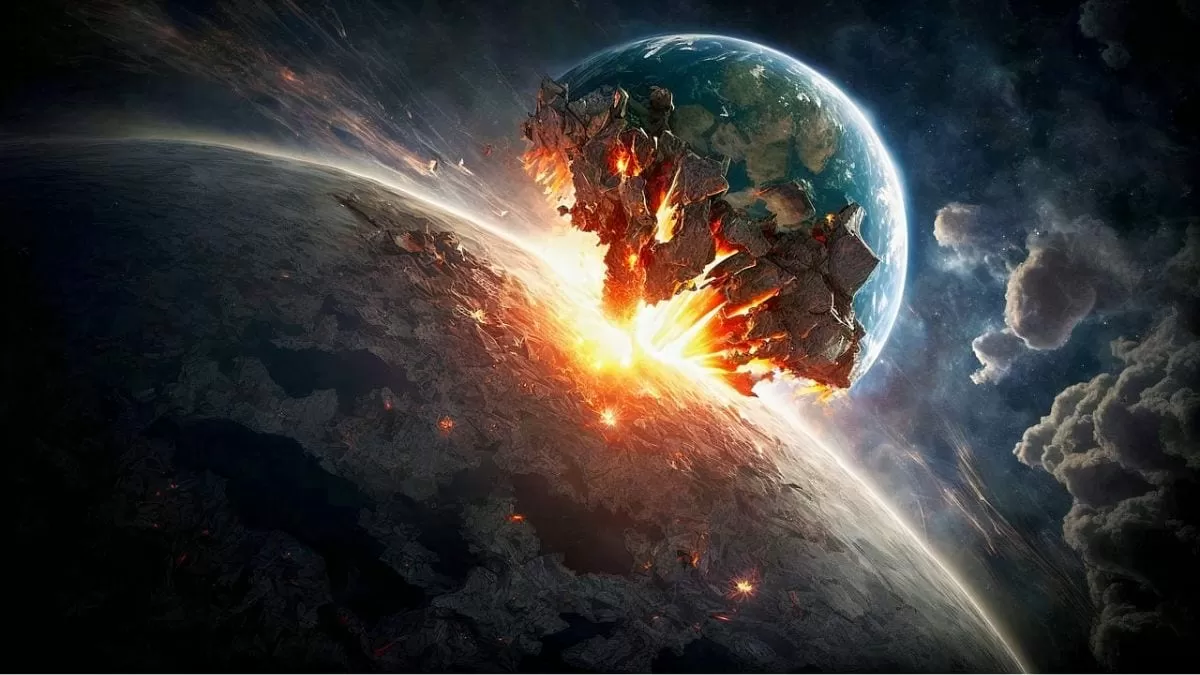Massive Megaripples: A Glimpse into the Power of the Ancient Tsunami
66 million years ago, a catastrophic event took place on Earth that changed the course of history. The Chicxulub asteroid, with a diameter of 6 miles, struck the Earth with a force equivalent to 100 trillion tons of TNT. The impact was so powerful that it is believed to have triggered a series of events, including the mass extinction of dinosaurs. However, until recently, the full extent of the impact has been shrouded in mystery.
Thanks to groundbreaking research using 3D seismic data, scientists have now uncovered a remarkable discovery – massive megaripples formed by the tsunami that followed the Chicxulub asteroid impact. These megaripples, with an average height of 52 feet and spanning an area of 900 square miles, offer new insights into the force of the ancient tsunami and its global impact.
The discovery was made by a team of researchers from the University of Louisiana at Lafayette, who used state-of-the-art 3D imaging technology to map the seafloor deep beneath Louisiana. The data, collected from the Gulf of Mexico, revealed the presence of these megaripples, which were formed by the force of the tsunami that travelled across the planet after the asteroid impact.
Dr. Gary Kinsland, a professor of geology at the University of Louisiana at Lafayette and lead author of the study, described the findings as a “new window into the past.” He explained, “These megaripples provide evidence of the immense power of the ancient tsunami and how it shaped our planet.”
The megaripples were created by the backwash of the massive wave as it retreated back into the ocean, leaving behind a trail of destruction. The size and scale of these formations offer a glimpse into the sheer force of the tsunami, estimated to be as high as 5,000 feet and travelling at a speed of over 600 miles per hour.
The mapping of these megaripples not only provides a visual representation of the power of the ancient tsunami but also sheds light on its global impact. By studying the orientation and spacing of the formations, scientists can now better understand the direction and strength of the tsunami as it travelled across the planet.
According to Dr. Kinsland, the findings can also help in modelling future tsunamis. He stated, “Understanding the ancient tsunami can help us prepare for modern tsunamis and mitigate their impact. By studying the megaripples, we can learn more about the behaviour of these massive waves and improve our ability to forecast and protect against them.”
The impact of the Chicxulub asteroid was not limited to the Gulf of Mexico. It had a global impact, causing earthquakes and volcanic eruptions, and leading to a major shift in the Earth’s climate. The discovery of these megaripples deep beneath Louisiana provides tangible evidence of this global impact, offering a new perspective on the magnitude of this catastrophic event.
The study also has implications for our understanding of the evolution of life on Earth. The mass extinction of dinosaurs and other species has long been linked to the Chicxulub asteroid impact. However, the exact mechanism of how the impact led to the extinction has been a topic of debate among scientists. The discovery of these megaripples provides new insights into the destructive force of the tsunami, which may have played a significant role in the extinction of these ancient creatures.
The mapping of these megaripples is a testament to the power of technology and its ability to uncover the mysteries of the past. It is a remarkable achievement that has the potential to change our understanding of one of the most significant events in Earth’s history. The findings have been published in the prestigious journal Geology, and the team’s research has already received widespread recognition from the scientific community.
As we continue to uncover the secrets of our planet’s past, studies like this provide a fascinating glimpse into the forces that have shaped our world. The discovery of massive megaripples formed by the ancient tsunami is not only a testament to the power of natural disasters but also a reminder of our planet’s resilience in the face of such catastrophic events. It is a story of destruction and survival, and it is one that we must remember as we strive to protect our planet and its inhabitants from future threats.








